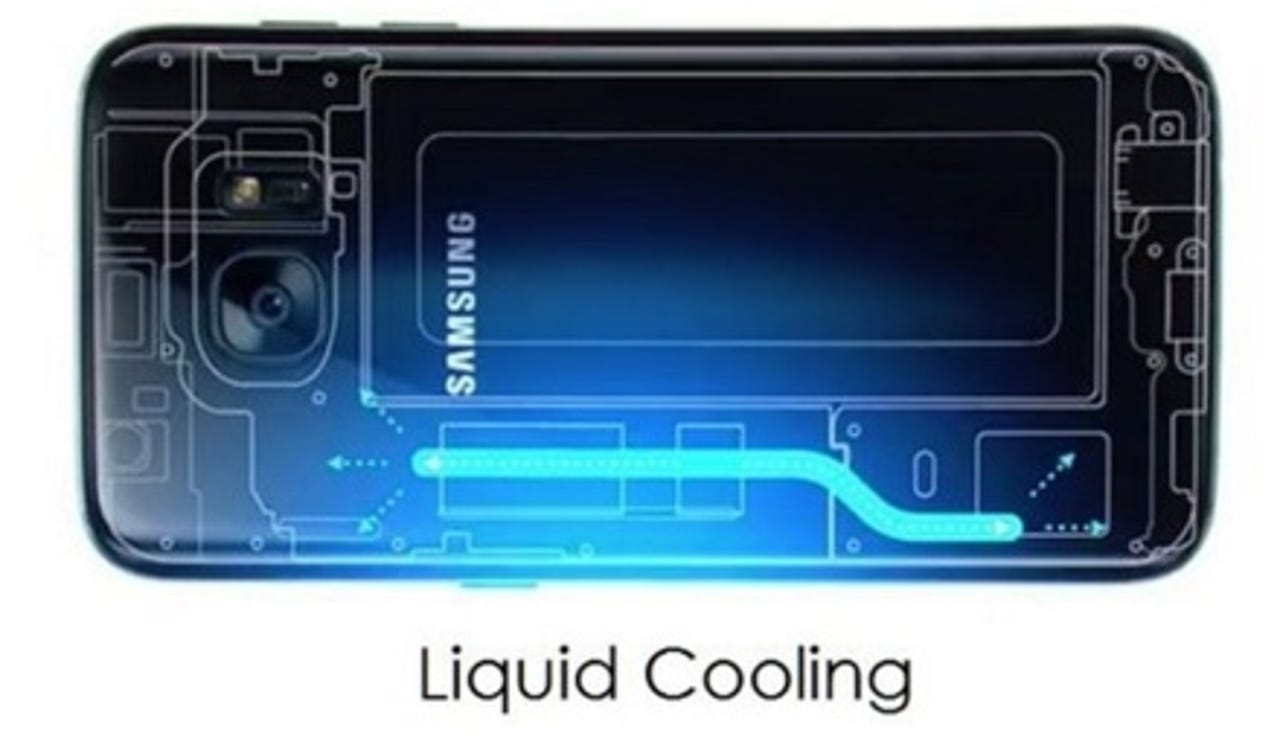How Samsung plans to keep the Galaxy S7 cool


Featured
As hardware makers cram more power into smartphones, the heat produced by the CPU and GPU becomes more of a problem. Samsung hopes to address this issue with the Galaxy S7 and S7 Edge by using liquid cooling.
"Whoa, liquid cooling?" I hear you scream at your screens. "Doesn't that mean pipes and radiators and water and so on?"
The sort of liquid cooling we're talking about here isn't like the liquid cooling systems that performance gamers use to cool their PCs. Instead, what we're talking about here is a closed-loop heat pipe technology.
There's still a liquid involved, but only a drop, and this is safely held inside metal tubes that are made of copper or aluminum. The liquid, which in this case is probably water or ethylene glycol, passes over an evaporator where it is exposed to the heat of the CPU of GPU. Here it is turned into a gas, and this vapor then makes its way along tiny tubes to a diffusion plate or radiator, where the heat is given off and the vapor turns back into a liquid and then makes its way back to the evaporator.
Note that the diffusion plate doesn't feature a fan or such, and there are no pumps inside the heat pipe moving the liquid and vapor about. It's a purely passive device, and its purpose is to take the heat from the CPU and GPU and dissipate it over a larger area, preventing the formation of hot-spots, and hopefully putting an end to overheating (which was a problem that Qualcomm had with the Snapdragon 810).
All of this sounds big and clumsy, but it isn't. Fujitsu has a heat pipe system designed specifically for smartphones where the pipes are only 0.1mm thick, and the evaporator and diffusion plates are only 0.6mm and 1.0mm thick, respectively.
And the Samsung Galaxy S7 isn't the first smartphone to feature liquid cooling. Microsoft's Lumia 950 and Lumia 950xl both use liquid cooling. Sony's use of the technology goes further back, to the Xperia X2, which was released in March of 2014.
Why use liquid cooling? It's probably being used for a number of reasons. First, Qualcomm had problems with the Snapdragon 810 overheating, a problem that resulted in Samsung passing up on the chip for the Galaxy S6 and S6 Edge. The liquid cooling would certainly help to prevent this issue from happening again.
Another reason is that smartphone makers are using more and more glass in their smartphones. Because glass is a poor conductor of heat, hot spots can form on the device, and even if the back is metal, these hot spots can make the device uncomfortable to hold when it's running demanding apps.
Also, let's not forget that "liquid cooled" looks good on the sales material. I have little doubt that by this time next year, every major smartphone manufacturer (with the exception of Apple) will be touting liquid cooling as a feature on high-end devices.
See also: